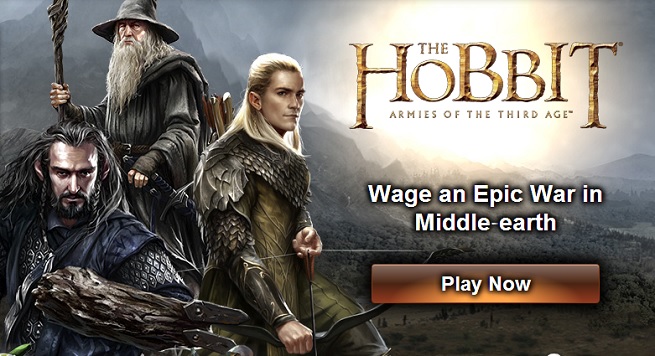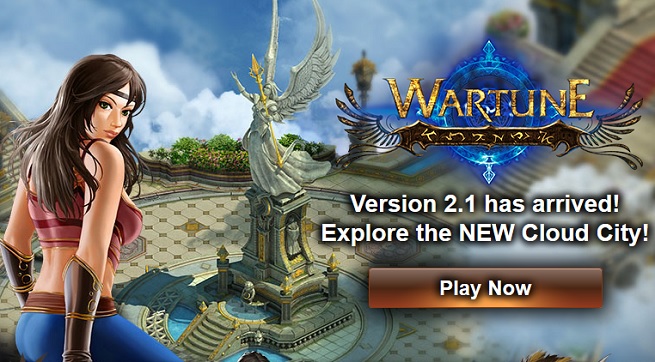GamesBeat: Monetization also followed. How did that part happen? How did you guys figure that out?
Sheppard: I don’t know how many people in the room worked back in the social days, when virality was the only thing people talked about. But very early on, Kabam, consistent with our approach to market entry and company strategy, chose to differentiate from the crowd that was doing virality. It felt that virality was, one, not really great for the user experience, and two, something that you couldn’t ultimately control.
There’s always going to be a bad actor in a viral ecosystem that sends so many notifications that the platform has to clamp down. Just by virtue of creating that ecosystem, it’s a race to the bottom as far as platform behavior. In contrast, with monetization, you’re leading into something we believe very heavily at Kabam, which is that free-to-play is the most democratic form of game development. People will only pay to participate in your game if they see value in what you’re selling. Because of that relationship, you immediately are going to build your game in a way that paying users care about. Ideally, too, in a way that encourages more people to pay. It’s easy to listen to a vocal minority and end up building something small. We generally aim not to do that.
GamesBeat: What have you learned about the motivations people have for buying things? I’ll just put mine out there, which is—I’m in a 100-person clan in The Hobbit. If I fall behind, and I’m like No. 100 in the clan, I’m going to worry that I’ll be kicked out, because I’m too small a player. They want to grow. So the motivation is there to just start spending like crazy. I haven’t done that, but the fear of being kicked out of my clan is a good reason for monetizing.
Sheppard: That’s definitely a driver. The way that we look at product development, we actually start by thinking—this is pulled more from traditional gaming, but we think about the primary and secondary audience for every game. We map it against the genre preferences for those audiences.
Some players are very much driven by the social engagement component, whether it’s keeping up with folks or helping other people. Some people are driven by competition. Some of our competitors from the web talked about revenge or dominance being a motivator for spend. We’ve actually found that that form of monetization is less durable. It’s also more toxic to the community. When you have someone who has the ability to spend a large amount in these games, and you give him the power to decimate everyone that’s casual, it creates a bullying mechanic. It encourages people to not come back. It’s not fun to play with that person.
There are also people who care about progression. This is more common in RPGs. The RPG user cares a lot about advancing through something, whether it’s advancing through a character tree or advancing through a universe or a storyline. They’ll often pay to advance through that storyline.
Then there’s also people paying to participate in something that’s of limited duration. Whether it’s a sale or a promo, which is the more commonly understood concept, or an event like a boss raid in some of our newer titles–Phoenix Age, with Underworld Empire, is really strong at this.
GamesBeat: You can gift currency or a really valuable thing over to other players. You can buy something with your own real money and then give it away. That makes you the most popular person in your clan.
Sheppard: Absolutely. Helping others is a big one.
GamesBeat: Did all of this translate into mobile fairly easily?
Sheppard: It was a big transition, moving from web to mobile. For those of you that started off in web and are either approaching mobile or in mobile now, it’s such a different ecosystem. In many ways, especially as the fidelity of the devices improves, it’s becoming more like console or, if it’s Android, more like PC. The release cycles are longer. The updates take more time than web. With web you can make realtime updates and see it in the game right away. The games are much higher quality. Our newer games are substantially more expensive to build – not just the visual quality, but also just the depth of the features and gameplay that people expect is much higher.
GamesBeat: What’s the team size or the usual budget these days? Is a million bucks going to get you very far?
Sheppard: Depending on geo – we have studios in Beijing, Vancouver, Seattle, and San Francisco – we have teams ranging from 20 on a very light casual-core game all the way up to 75 on a live product that’s at scale. The Hobbit is about 75 folks. Dev costs can range between $2 million and $6 million, depending on which project you’re talking about. In some cases we’re anticipating higher dev costs.
The functional mix on mobile is very different from web. Not only for our games, where you generally have a persistent meta layer, which is either server-based or global, there’s more backend complexity. Relative to console, you have more backend engineers. Relative to web, you have much more frontend and UI engineers. A lot more QA as well.
GamesBeat: You guys crossed $300 million last year and doubled revenues. That was basically being successful in mobile?
Sheppard: Yeah. Mobile, as a backdrop, is an incredible platform. You’re looking at 35 percent growth on mobile revenues over last year, in gaming alone. $12.3 billion global market. 45 percent of that is Asia, 24 percent North America, 4 percent Latin America, the rest of it Europe and the Middle East. Gaming apps are 40 percent of all app downloads. Games constitute 75 percent of revenue.
For us as a company, we’re a bit unique in that all of our games are long tail games. We focus on building games that run more like television shows. We want to produce, with a beta test, a pilot television program. If the market deems it’s good and people see value in it and want to pay money for it, it becomes the first season of a game. Through expansion packs we drop new episodic content – effectively new series of content that, at each step, tries to align with where the consumer wants the game to go. That’s the democratic element of free-to-play.
We’re literally talking to users, both inside the game and out — where do you want to see this thing arc? Both paying and non-paying users.
GamesBeat: There’s some sophisticated content that you can launch, sort of like a DLC in consoles almost, but some of it is also very simple, like just holding a tournament. Tournaments are things that the clans go crazy over. They’re all trying to get first, so they can get more free stuff. That seems like it’s simple to administer, right?
Sheppard: Much simpler to execute, and to some degree you can automate it. We’ve modeled our operations to be more off of an Asian developer. We have what we call live operations, but at some other companies it would be called service operations. The function would be game masters. They’re charged with, in many ways, being the party planner for each server, where they jump in every day and they’re running a schedule of events. Sometimes just purely engagement, sometimes monetization-related. Puzzle & Dragons does this very well. I’d say, though, as a western developer, we’ve done the best job of pulling that over and adapting it.
Part of the reason why we generally bias away from automating it is we find that the preferences for types of events – not just the mix of events, but the payouts, the duration, the challenge – vary substantially by country. Perhaps better described as by language and by time of day? You want somebody that’s attuned to the audience and knows the gameplay super deep to be in there with the users making active decisions about what programming is happening at any given time.
GamesBeat: I’m curious about the portfolio strategy versus the super major hit strategy. Supercell has just three games. King is really built on one major game. EA has 900 games, but it can’t catch up with those guys. You guys have the portfolio strategy, focused on a particular genre. Is this going to be a winning strategy?
Sheppard: There are pros and cons to both approaches. The portfolio strategy gives you the ability to diversify risk a bit. Interestingly enough, all of the companies, relative to their revenue, probably have about the same percentage of dollars running into R&D. It’s much more about whether you allow the market to see the games that you think are not going to be hits. As a company, we’ve chosen to put more games out than not, because we feel that free-to-play revenue experience, which in traditional games would be called shipping experience, is the most important experience for the teams to have.
For those of you that have lived through shipping a game, whether it’s traditional or mobile, whether it’s service-based or a packaged product, including the 99-cent games as well, there’s nothing better than putting it out there and getting immediate feedback from the audience on whether it’s working or not. It needs to have one or two cycles to try to steer the game toward what that audience really wants.
Our ethos as a company is, we believe in our experience to date, especially in the categories we’ve had experience in, but we’re incredibly humble about categories we don’t know. We assume the best way to learn is to begin that dialogue with consumers. When we pushed from strategy into racing games with Fast & Furious, and when we pushed into RPGs with Heroes of Camelot and now Underworld Empire and Castle Age, in all of those situations we went out knowing that the games weren’t perfect. We were tabling a lot of internal debate as to modify the games and letting the audience tell us what we should do.
GamesBeat: The loyal fans, did they move over from Facebook into mobile? Or are you mining new users?
Sheppard: The approach we took with Kingdoms of Camelot, which was our first mobile title—It was a great confluence of factors. It was original IP, a franchise that had reached 20 million users on the web. When we brought it to mobile it ended up being the top-grossing app of 2012 on iOS. Surprisingly, there’s a low degree of overlap with the web. Part of that was because we didn’t connect the backends. We also adhered by the platform guidance of not doing any user migration. We didn’t feel that was necessary.
The thesis for that was, the taxes are equivalent. There’s not really a huge benefit to that. Users will find it one way or another. What we were trying to find out is if mobile reached a different audience, and what we found is that at that time, it did reach a different, but overlapping audience from a user standpoint, but a very different audience from an engagement standpoint.
A good way to describe that is to think about the way that you live your lives today. If you’re anything like me, you’ll use your mobile phone at a conference. You’ll use your laptop at the office. You’ll use your tablet at home in bed. Each one of those use cases effectively makes you a different consumer. When you have a game that’s restricted to Facebook and web—we were able to tap into a share of time that we couldn’t otherwise. It ended up working out well.
There was a huge benefit for us separating the two games, also, because we made subtle changes to the way the session designs were architected. We steered into shorter session times, and we also removed some of the more core elements of Kingdoms of Camelot web. It’s a more punitive game design, where players can hurt each other more.




